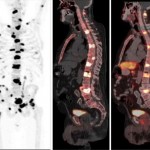Article of the Week: The effect of hypogonadism and testosterone-enhancing therapy on AP and BMD
Every week the Editor-in-Chief selects the Article of the Week from the current issue of BJUI. The abstract is reproduced below and you can click on the button to read the full article, which is freely available to all readers for at least 30 days from the time of this post.
In addition to the article itself, there is an accompanying editorialwritten by a prominent member of the urological community. This blog is intended to provoke comment and discussion and we invite you to use the comment tools at the bottom of each post to join the conversation.
Finally, the third post under the Article of the Week heading on the homepage will consist of additional material or media. This week we feature a video from Dr. Darius Paduch discussing his paper. Make sure you have a stable internet connection. In order to have the best telehealth experience possible, you must be using a strong, stable internet connection. Keep your hands free. If you can find a comfortable stand for your video device or have something to prop it up against, will free up your hands to take part in the physical therapy session. Remember to use a compatible internet browser. Below is a list of compatible internet browsers for your telehealth session. Whichever browser you are using, make sure to keep it updated to the most recent version. Laws governing telehealth reimbursement vary in each state. In our experience, most health plans have covered these services however, every insurance company is different. Well medical malpractice insurance cost and quality are always good to afford. We recommend checking with your insurance provider or the clinic prior to your appointment to make sure you’re covered. All 50 states, the District of Columbia, and the US Virgin Islands allow patients to seek some level of treatment from a licensed physical therapist without a prescription or referral from a physician. There may be some restrictions in your state but for the most part this means is that you can now receive physical therapy, even virtually, without a physician’s referral/prescription. Check with your state’s regulations or your clinic prior to your appointment. you can discover more here for Telehealth.
If you only have time to read one article this week, it should be this one.
The effect of hypogonadism and testosterone-enhancing therapy on alkaline phosphatase and bone mineral density
OBJECTIVE
To evaluate the relationship of testosterone-enhancing therapy on alkaline phosphatase (AP) in relation to bone mineral density (BMD) in hypogonadal men.
PATIENTS AND METHODS
Retrospective review of 140 men with testosterone levels of <350 ng/dL undergoing testosterone-enhancing therapy and followed for 2 years. Follicle-stimulating hormone, luteinising hormone, free testosterone, total testosterone, sex hormone binding globulin, calcium, AP, vitamin D, parathyroid hormone, and dual-energy X-ray absorptiometry (DEXA) scans were analysed. A subgroup of 36 men with one DEXA scan before and one DEXA 2 years after initiating treatment was performed.
RESULTS
Analysis of the relationship between testosterone and AP at initiation of therapy using stiff linear splines suggested that bone turnover occurs at total testosterone levels of <250 ng/dL. In men with testosterone levels of <250 ng/dL, there was a negative correlation between testosterone and AP (R2 = −0.347, P < 0.001), and no correlation when testosterone levels were between 250 and 350 ng/dL. In the subgroup analysis, the mean (sd) testosterone level was 264 (103) ng/dL initially and 701 (245), 539 (292), and 338 (189) ng/dL at 6, 12, and 24 months, respectively. AP decreased from a mean (sd) of 87 (38) U/L to 57 (12) U/L (P = 0.015), 60 (17) U/L (P < 0.001), and 55 (10) U/L (P = 0.03) at 6, 12, and 24 months, respectively. The BMD increased by a mean (sd) of 20 (39)% (P = 0.003) on DEXA.
CONCLUSION
In hypogonadal men, the decrease in AP is associated with an increase in BMD on DEXA testing. This result suggests the use of AP as a marker of response to therapy.



